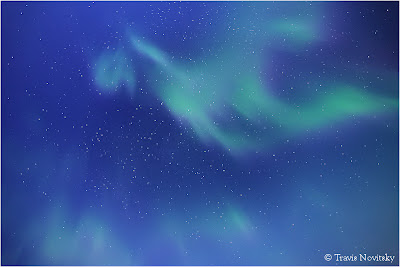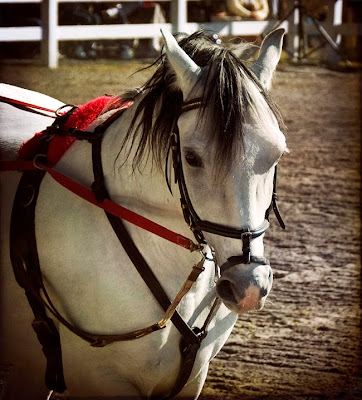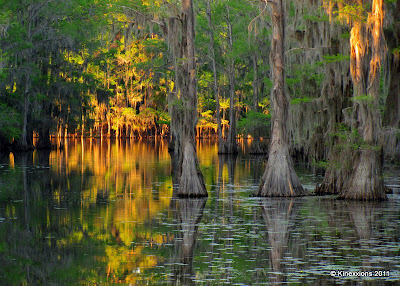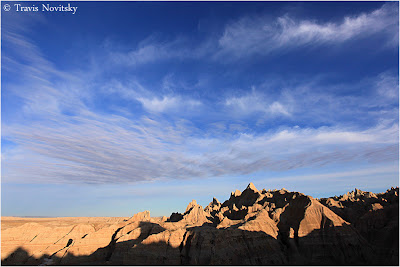To my amazement themost often read blog entry on Cold Thistle is the Phantom Guide/Batura boot comparison. The page reads on that one post more than doublethe next most popular blog. The comparison was first posted in April of . Almost two full years later and the same blog entry still gets the highest number of reads month after month.
http://coldthistle.blogspot.com//04/scarpa-phantom-guide-vs-la-sportiva.html

First generation Batura on M6
While I have always had great hopes for the "super gaiter" style single boots I had no idea just how popular they obviously have become. I still think the technology could be bettered with a light weight and low profiledouble boot.The boot manufactures and the buying public seem to disagree with my theory.
Ok, so call me cynical.
I wasn't impressed with the Batura 2.0's name. I mean how different could the "2.0"be fromthe previous 2 or 3 variations or generations of the Batura? Or for that matter from the Phantom Guide or one of my favorites the Phantom Ultra?

I understand keeping the name " Batura" attached to this model.The "2.0" was kinda a joke to me on first impression. How different could the boot really be? In this case a lot different. It isn't the same boot really, or even a variation of the old Batura, if you look closely. If you are like me, I first coughedand muttered BS under my breath when I first heard the rumors of "a much better boot". But I have changed my opinion on that, it is in fact a much better boot..

That was easy to figure out oncethe newest 2.0 showed up on FED EX.
Just pulling the boots from the box was a wakeup call. For any one who has climbed in a double boot...any double boot and also climbed in a super light Fruit boot you have to wonder why the two technologies haven't merged over the last decadewith better effect.
My idea of a mountain boot these days is the weight and technical ability of a fruit boot like the incredible Boreal Ice Mutant. More realistically a Scarpa Ultra with some additional warmth and lighter yetin weight?The support on ice and warmth of a Spantik or Baruntse would be a bonus. And the over all profile of the Trango series. The Scarpa 6000 comes pretty close to that idea but lacks the support on endurance ice in comparison to the La Sportiva models. And its volume is getting up there in comparison to the Ultra for instance. After all it generally takes more volume in a boot to offer more warmth, right?
But if I make that call on the Phantom 6000then the Batura comes up lacking on endurance ice as well. A real fruit boot on similar terrain? Pity the fool! But a really light weight boot given the right support is such a pleasure to move in on most terrain.
Like the choices made in steel for ice tools, every decisionyou make in design and materials limits the over all use of any product. So you first define the product.
Obviously the Batura is no fruit boot but neither is it a doubleboot.
La Sportiva NA president, Jonathon Lantz calls is a true "1.5 boot". Half way between the bestsingle boot and the bestdouble boot for warmth.
The Baturahas just been defined for warmth.
For difficult technical cold weather ice, mixed and alpine climbing we all know you need a few things incorporated in the design. Low profile and small volume over all. Think fruit boot here to be take every advantage of the terrain. The flip side for technical ground is an awkward and big in volume,ski boot. Which I assume we all want to avoid. Make the sole rigid but no so rigid you can't walk in them. Make that midsole durable so the boots never change in flex. It is a climbing boot so you want a flexible ankle with enough support for endurance ice when required but enough flexibility for hard technical ground with and without crampons.
It is quite a wish list when you write it all down.
If this were easy we wouldn't have dozens of pairs of boots from many different manufactures trying to attain the same goal with varying levels of success.
The Batura has been successful as a "1.5". Nothing new here as the basic designhas gotten better every year since 2007 from my personal perspective. There is so much potential yet in this boot style. The same basic technology can be easily traced back to theearly1970s and Peter Carmen's Super Gator. And it has worked well in the fieldever since. I am thrilledLa Sportiva and now Gore has continue to evolve thisstyle of boot.
So what exactly is different from the Batura Evo?
Tocontinue theevolution of the Batura, a second Gore-Tex membrane was added . Now boththe outer gaiter and in the inner boot have a Gore-tex layer for more complete protection.
The plastic zipper has also been scrapped in favour of a simple zipper with a Velcro hook and loopclosure on the gaiter. I only which they had added another inch or two to the gaiter.
Otherwise, construction appears to be the same as last year’s model, and the boot continues to be built on a Nepal last (i.e. if Nepal EVOs fit you, these should have the same fit). The 2.0s feel seriously light. I mean three-season alpine boot light!
Actual weight on my scale?
1130g one 43 Batura Evo
890g one 43 Batura 2.0
Best thing I can do is make a side by side comparison, Batura Evo to Batura 2.0.
Height of gaiter - same
materials used- lighter in weight for the 2.0

dbl layer Goretex - new to the 2.0
lower profile boot/toe - new to the 2.0

Left to right, new 2.0, last year's Evo and a Ultra
Below, carbon mid sole - new to the 2.0 on the right....earlier Evo version on the left. Thinner for better feel but also warmer.

Above, the additional sole rocker and carbon fiber midsoleof the2.0 is shown on the right.
On the left is the previous generation Batura EVO.
foot closer to the rock/ice - by design in the 2.0
zipper and Velcro closer on gaiter - new to the 2.0
rocker
lace lock
ankle padding and stiffness
tongue bellows
fit and lacing
lighter in weight
Below, 30mm toe rocker on the Ultra, 38mm toe rocker Batura 2. Making the Batura 2 easier to walk in. Much like the rocker profile on theSpanik.

Note the differences in sole thickness with La Sportiva on the left and Scarpa on the right, where you attach the front cramponbail. The Batura sole profile is a much easierfit to any current crampons
The first thing I noticed is the boot's weight. That you notice right out of the box. In a size 43 the 2.0 is a full 240g lighter per boot than the previous Batura Evo.
240 grams = 8.5 ounces per boot
That is a savings of 17oz per pair in a size 43 over the current boot.. You'll save more weight as the boots get bigger. Lack of the boot's tongue and the new carbon fiber mid sole will show there.
Interesting that they new Baturas are so light. A good bit of the weight savings was done by using a super thin, honey comb, carbon fiber mid sole. Carbon is being used in the Olympus Mons, the Spantik and the Mega ice, oh and the Stratos AT boot. My take is the Batura has been bumped into a totally difference class of boot by La Sportva simply because of the manufacturing techniques and costs associated with the new Batura 2.0 design and manufacturing effort.
The new mid sole is now lighter, warmer because of the added air spaces in the honey comb and more consistent in flex. Jonathon Lantz says, "this mid sole is slightly softer in flex but will never get softer, as the previous 9mm Ibi-Thermo mid sole material didin use". You couldn't tell that by my samples. The sole is rigid on these!
The thickness of the insulation has changed. For the moment at least Mr. Lantz wasn't offering anything very specific on the insulation. "Lighter and warmer" was the definition :)
No surprise I like a rigid soled boots and a stiff cuff. Generally I like my boots more rigid than most fabric ankle boots are capable of. Good news here. You have to look close to feel it but the actual boot that supports your foot is now made of a slightly stiffer Cordura fabric. Point is the added stiffness in the ankle was intentional and a good addition imo. Make no mistake though, it isn't a fabric version of the Nepal Evo by any means. And I would still be hard pressed to say the 2.0 is any stiffer than a pair of Trango Extreme Evos. Plenty of support but not so much as it limits your technical climbing ability. The Batura 2.0 still incorporates, "The 3D Flex™ ankle hinge allows side to side movement for better footwork while still providing longitudinal lockout when front pointing."
It doesn't appear the stiffer Cordura material will change the fit. But the super streamlined new bellows tongue design, new insulation material and two layers of Goretx will. That is complete coverage by one 3 layer Gortex on the exterior gaiter and another complete sock liner of 2 layer Goretx on the inside. of the boot.
"To stay warm you must stay dry."
If you have followed the previous blog posts on winter clothing you already know staying dry is the key to staying warm in a cold climate. One of the distractions for me in the olderBaturas is theyheld moisture. You had to be very careful on how you manages the sweat from your feet and if out over night how you kept you boot dry internally long term. I have used both Seal Skinzsocks and Mitchums antiperspirant to lower the moisture coming from my feet in an effort to keep the insulation in the Baturas working at its best.
Boot soles? Lighter weight? One word, traction.
The Vibram Mulaz sole climbs better on technical rock. But the LaSportiva / Vibram claim the Impact Brake System sole is better for long approaches and big days in the mountains.
I'd rather see an additional drop in weight and the Vibram Mulaz sole used on the new 2.0.
Each boot takes 34 days to put together, most of that glue-drying time, and they continue to be handmade in Italy which makes me feel a bit better about the suggested $650 price tag.
We seldom get a view behind the curtain when it comes toresearch and developmentfrom any European manufacture. (Or the U.S. for that matter) But in this case I did get a glimpse of the testing that La Sportiva and surprisingly Gore in Italy did on the newest Batura.
Last year to develop the new technology for the 2.0 version, Gore Italyand La Sportiva did some innovative testing that I have never heard of being done for a mountain boot prototype. Overseveral weeks in the Slovenian Alps, Gore scientists and La Sportiva boot makers collectedthe data from heat and moisture sensors and the personalfeedback from40 pairs of tester's boots and the testers themselves. That datawas down loaded twice a day for weeks.I am impressed!
So when you ask yourself why La Sportiva uses a Gore product in their boots it should be obvious. Both Gore and La Sportiva have developed a mutual trust and both are willing to go to the extra effort to push the technologies availablefor our benefit.
These are comments from others already using the Batura 2.0:
"the new version with GoreTex Gaiter and GoreTex boot"
"They give a snug fit while letting the toes enough spare place to move which I really like for avoiding
cold feet and kicking hard ice."
"Although if wet, for example if you sweat in them too much while
an approach in warm temperatures they are still hard to dry."
"In general I think the made a good trade of concerning the insulation.
The are thin enough, so that you can wear them in the alps in the summer
time without excessively sweating in them, further more they are warm
enough for ice climbing on cold winter days. But I have to admit that it
can get a bit chilly in them on really cold belay days.
I've had cold feet in them while ice climbing on a day with -17°C."
"The Baturas have indeed changed a lot, the ankle is a lotmore forgiving than the old version and I think I could live with them I thatrespect. The last however has changed unless I’m mistaken. They used to feellike a (slightly) roomier Nepal Evo. Now they feel like a Trango. I get aslight toe crush as I do with my Trango Evo which is not good for a warm boot.The heel has also gone the way of the Trangos, I now get considerable liftwhich I never got before. I would also add that we're stiffer
than pretty much any other fabric boot I've seen."
■A six layer fully synthetic boot specifically designed for winter mountaineering.
■Board lasted construction.
■Upper:
- Exceptionally resilient nylon.
- Insulated anti-dragging felt.
- Insulated polyethylene (PE).
- Insulating aluminum layer.
■Gaiter:
- Elastic Cordura® provides waterproof protection, while allowing ventilation for a comfortable environment.
- Schoeller® - Dynamic™ with water repellent membrane.
- Vibram® rubber rand.
- Elastic nylon with impermeable insulating layer.
- Asymmetrical, waterproof zipper for easy, on the go access.
■Lining:
- Polyamide Thermic layer for extra warmth.
- Durable mesh layer extends wear and ensures moisture is transferred away from the skin.
■Insole:
Insulating Ibi-Thermo 9mm.
■Midsole:
-8-9mm TPU.
- PU Inserts.
- SBR Aircushion.
■Outsole:
- 8-9mm TPU.
- PU Inserts.

Previous Evo version with a plastic mid sole and simple gaiter zipper

The newest Batura 2.0 with carbon fiber mid sole and a Velcro closed zipper on the gaiter.


new Batura 2.0 and the new Salewa Pro Gaiter both in a Euro size42


















 Ed's comments,
Ed's comments, "The north face has made my anti-bucket list; that is, I've added it to places I would rather not be. I have recalled two interesting anecdotes about this area."
"The north face has made my anti-bucket list; that is, I've added it to places I would rather not be. I have recalled two interesting anecdotes about this area."




